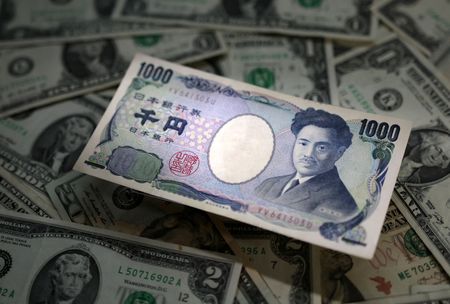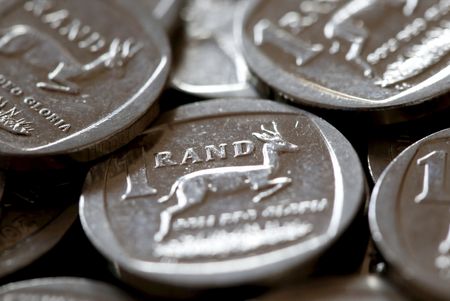By Amanda Cooper
LONDON (Reuters) -The yen rose on Friday after Japan’s new finance minister said the government has been monitoring foreign exchange movements with a high sense of urgency, but was still heading for its weakest monthly performance against the dollar since July.
The Japanese currency has had a tumultuous week that included a brief but powerful rally, after U.S. Treasury Secretary Scott Bessent took a few swipes at the Bank of Japan for not raising rates quickly enough, only for BOJ policymakers to then keep policy unchanged, as had been widely expected.
Finance Minister Satsuki Katayama said on Thursday she would not stand by remarks she made in March suggesting the yen’s real value is closer to 120-130 per dollar, citing her current position as minister overseeing currency policy, which snuffed out some optimism among yen bulls.
TOKYO INFLATION COMPLICATES BOJ PICTURE
The yen was marginally stronger in Europe on Friday, leaving the dollar steady at 154.125 yen, above a near nine-month low, after government data showed core consumer prices in Tokyo rose 2.8% in October from a year earlier.
The warmer-than-expected reading indicated inflation remains above target in the Japanese capital, complicating the Bank of Japan’s path after it held interest rates steady on Thursday.
“We’re getting to a point where the yen weakness is becoming something of a focus for politicians,” Sim Moh Siong, currency strategist at Bank of Singapore, said.
The yen has lost 4% against the dollar in October, its worst monthly performance since July, and has hit a record low against the euro.
The dollar index, which tracks the U.S. currency against a basket of six others, nudged at three-month highs after a week of central bank decisions, tech sector earnings and a tentative U.S.-China tariff truce.
“Risk aversion favours the dollar,” Rodrigo Catril, currency strategist at National Australia Bank in Sydney, said.
“The Fed isn’t sure whether it will be cutting again,” he added. “And yen weakness coming from what the BOJ is doing isn’t helping.”
A more cautious tone this week from Federal Reserve Chair Jerome Powell on a possible December rate cut has prompted traders to cut the chances of such a move to around 75% from above 90% a week ago, according to the CME Group’s FedWatch tool.
The euro was flat at $1.1562 after the European Central Bank kept interest rates unchanged at 2% for the third meeting in a row on Thursday and repeated that policy was in a “good place” as economic risks recede. The euro has fallen 1.4% this month, as the dollar has gained broadly.
POUND SAGS
Sterling fell 0.2% to $1.312 as political pressures grew surrounding British Finance Minister Rachel Reeves.
The pound is heading for a 2.3% drop this month, while gilt yields have dropped, as investors have scooped up UK government debt, driven by concern over what Reeves’ November budget might mean for businesses, households and overall economic activity.
Against the euro, sterling’s performance has been even worse. The single European currency is now at its highest in well over two years against the pound and is set for a fifth straight month of gains. It was up 0.15% at 88.12 pence on Friday.
“The outlook in the UK is looking fragile. We know that the market hates uncertainty as well and we’ve still got this long waiting game of this sort of uncertainty that the market’s just going to have to swallow up until we get more solid facts and figures from the Chancellor,” City Index markets strategist Fiona Cincotta said.
“The government’s in a difficult position where it really has limited choices now. And that’s being reflected in the fact that the pound is just not in favour,” she said.
Elsewhere, the dollar held steady against the Chinese yuan in the offshore market, holding around 7.111 yuan, despite data showing China’s factory activity shrank for a seventh month in October, missing forecasts.
(Reporting by Gregor Stuart Hunter; Editing by Cynthia Osterman, Kim Coghill, Andrew Heavens and Chizu Nomiyama )









